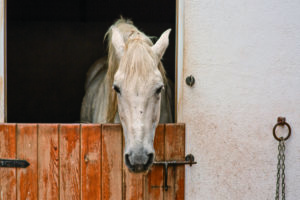Researchers Find Link Between PSD Development, Straight Hocks

Proximal suspensory desmopathy (PSD) causes debilitating, possibly career-ending, hind-limb lameness, particularly in sport horses. But new study results could help owners and veterinarians prevent it—or at least select to avoid it. British researchers have learned that PSD development could be associated with straight hock conformation.
For every degree of increase in hock angle (leading to straighter hocks), the researchers found a 12% greater chance one of their study horses would have PSD, said Sue Dyson, MA, Vet MB, PhD, DEO, FRCVS, head of clinical orthopedics at the Animal Health Trust Centre for Equine Studies, in Newmarket, United Kingdom.
Horses with PSD have inflammation and tissue damage in the upper part of the suspensory ligament, a structure that connects to the top back of the cannon bone, divides into two branches that attach to the proximal sesamoid bones, and lies under the superficial and deep digital flexor tendons and the check ligament. Traditional treatment approaches have generally involved an extended, expensive period of confinement or inactivity, although results are often poor, and Dyson’s group usually recommends surgery
Create a free account with TheHorse.com to view this content.
TheHorse.com is home to thousands of free articles about horse health care. In order to access some of our exclusive free content, you must be signed into TheHorse.com.
Start your free account today!
Already have an account?
and continue reading.

Written by:
Christa Lesté-Lasserre, MA
Related Articles
Stay on top of the most recent Horse Health news with













